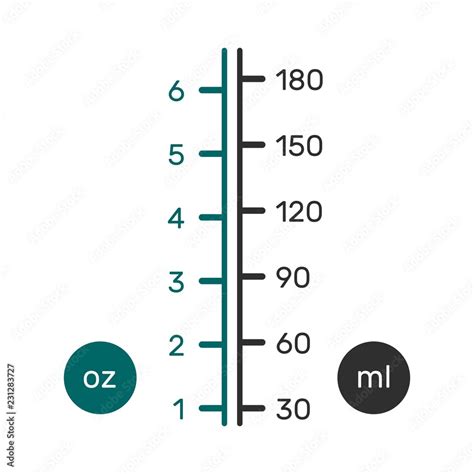How Many Fluid Ounces Is 50 Ml
Kalali
Apr 06, 2025 · 4 min read

Table of Contents
How Many Fluid Ounces is 50 ml? A Comprehensive Guide to Metric and Imperial Conversions
Understanding unit conversions is crucial in various aspects of life, from cooking and baking to medicine and science. One common conversion that often causes confusion is between milliliters (ml) and fluid ounces (fl oz). This comprehensive guide will delve into the conversion of 50 ml to fluid ounces, explain the underlying principles, and provide practical examples to solidify your understanding. We'll also explore related conversions and tackle some common misconceptions.
Understanding the Units:
Before we dive into the conversion, let's briefly define the units involved:
-
Milliliters (ml): A unit of volume in the metric system. It's a small unit, commonly used for measuring liquids in everyday life.
-
Fluid Ounces (fl oz): A unit of volume in the imperial system. There are two types of fluid ounces: the US fluid ounce and the imperial fluid ounce (used in the UK and other Commonwealth countries). These two differ slightly in volume. We'll focus primarily on the US fluid ounce in this article for clarity, explicitly mentioning any differences with the imperial fluid ounce.
The Conversion: 50 ml to Fluid Ounces (US)
The exact conversion factor from milliliters to US fluid ounces is approximately 1 ml = 0.033814 fl oz. Therefore, to convert 50 ml to fluid ounces, we multiply:
50 ml * 0.033814 fl oz/ml ≈ 1.69 fl oz
Therefore, 50 ml is approximately equal to 1.69 US fluid ounces.
Practical Applications and Examples:
Understanding this conversion is valuable in various situations:
-
Cooking and Baking: Many recipes use both metric and imperial measurements. Converting between ml and fl oz ensures accurate ingredient proportions, leading to better results. Imagine a recipe calling for 50 ml of milk – knowing it's roughly 1.69 fl oz allows for easy substitution if you only have a measuring cup marked in fluid ounces.
-
Medicine: Medication dosages are often specified in milliliters, especially for liquid medications. Knowing the equivalent in fluid ounces can be helpful for understanding the quantity being administered.
-
Science and Research: In laboratories and scientific experiments, precise measurements are critical. The ability to accurately convert between ml and fl oz ensures consistent and reliable results.
-
Travel: When traveling internationally, you might encounter different units of measurement. Being able to convert between ml and fl oz can be handy when dealing with liquid containers in your luggage or when purchasing beverages.
Understanding the Difference Between US and Imperial Fluid Ounces:
While the conversion above uses the US fluid ounce, it's important to acknowledge the slight difference with the imperial fluid ounce. The imperial fluid ounce is slightly larger than the US fluid ounce. The conversion factor for 50 ml to imperial fluid ounces is approximately:
50 ml * 0.035195 fl oz/ml ≈ 1.76 fl oz
This difference, while seemingly small, can become significant in larger quantities or in situations requiring high precision. Always be mindful of which fluid ounce is being used – US or imperial – to avoid errors.
Beyond 50 ml: Mastering the Conversion
The conversion principle remains the same regardless of the milliliter amount. To convert any amount of milliliters to US fluid ounces, simply multiply the milliliter value by 0.033814. Conversely, to convert fluid ounces to milliliters, multiply the fluid ounce value by 29.5735.
Common Misconceptions and Tips for Accuracy:
-
Rounding: While we've rounded the results for simplicity, for precise measurements, retain more decimal places during calculations.
-
Unit Consistency: Always ensure consistency in your units throughout the calculation. Mixing metric and imperial units can lead to inaccurate results.
-
Online Converters: While online converters are helpful, understanding the underlying principles is crucial for accuracy and to avoid relying solely on technology.
-
Significant Figures: Consider the number of significant figures in your measurements. The final answer should reflect the precision of the initial measurement.
Advanced Conversion Scenarios:
-
Converting Liters to Gallons: While not directly related to 50 ml, understanding the broader context of metric and imperial volume conversions is beneficial. Liters (L) and gallons (gal) are larger units, frequently encountered in industrial settings or large-scale applications. Conversion factors are readily available online.
-
Converting Cubic Centimeters (cc) to Fluid Ounces: Since 1 ml is equal to 1 cc (cubic centimeter), the conversion factor remains the same. Therefore, 50 cc is also approximately 1.69 US fluid ounces.
Conclusion:
Converting 50 ml to fluid ounces is a straightforward process once you understand the conversion factor and the distinction between US and imperial fluid ounces. Mastering this conversion and similar metric-imperial conversions is crucial for various practical applications, ensuring accuracy and precision in cooking, medicine, science, and everyday life. By understanding the principles and avoiding common pitfalls, you can confidently navigate the world of unit conversions with ease. Remember always to clearly identify which fluid ounce (US or imperial) is relevant to avoid any confusion and ensure accurate results.
Latest Posts
Latest Posts
-
A Carbohydrate That Yields Many Monosaccharides When Hydrolyzed Is A
Apr 07, 2025
-
What Is The Charge Of Hydroxide
Apr 07, 2025
-
5 Pies 6 Pulgadas En Centimetros
Apr 07, 2025
-
44 Degrees Celsius Is What In Fahrenheit
Apr 07, 2025
-
Cuanto Es Una Libra En Onzas
Apr 07, 2025
Related Post
Thank you for visiting our website which covers about How Many Fluid Ounces Is 50 Ml . We hope the information provided has been useful to you. Feel free to contact us if you have any questions or need further assistance. See you next time and don't miss to bookmark.